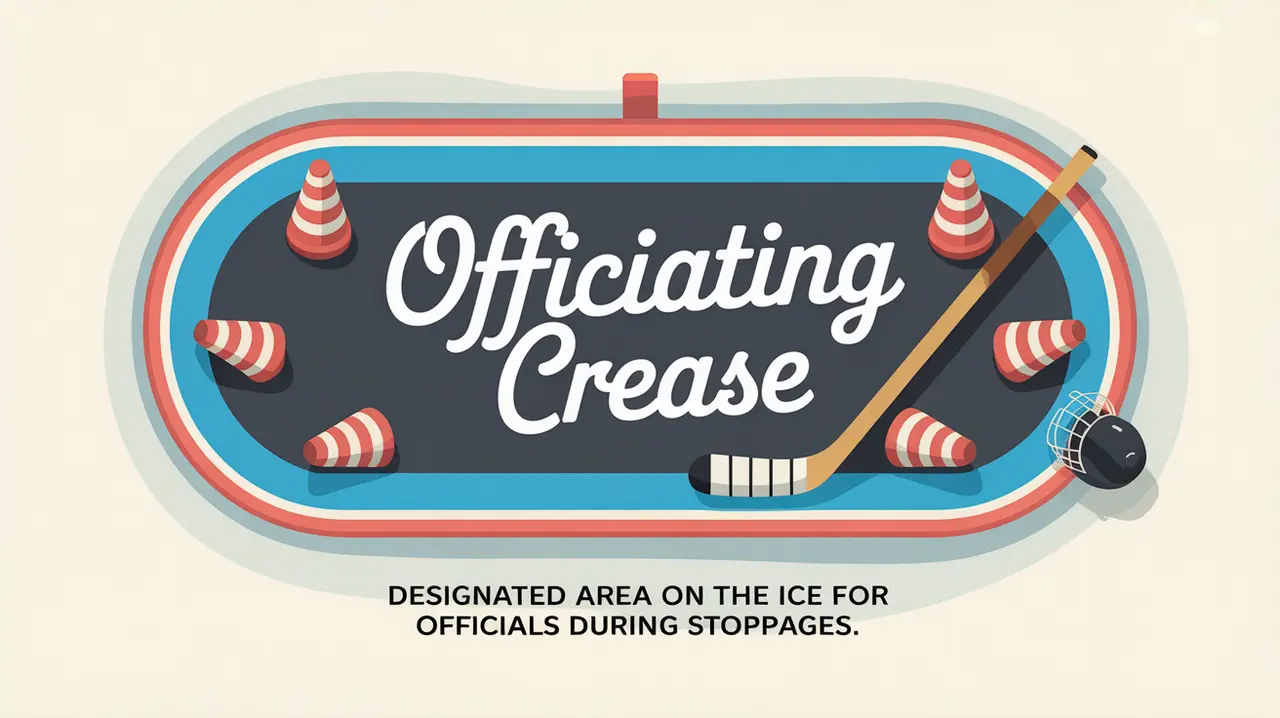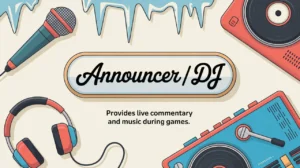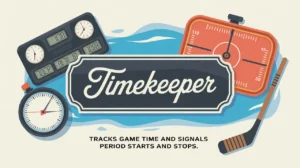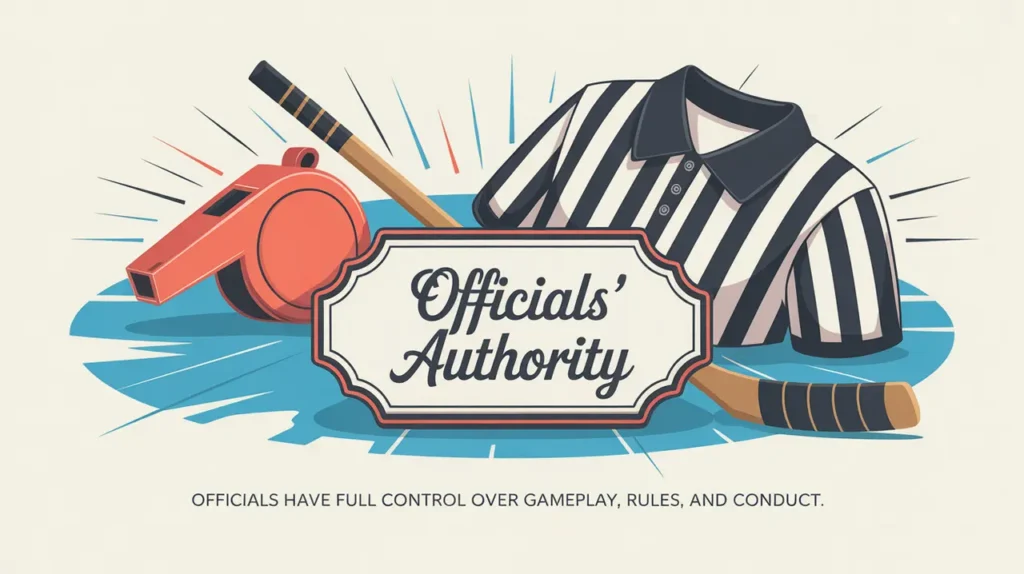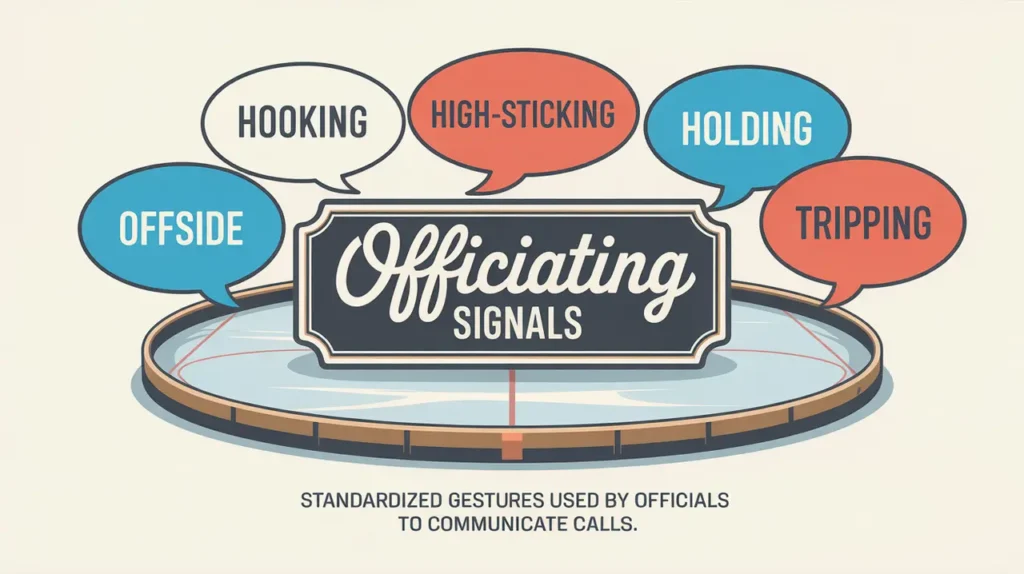Jim’s Intro to the Officiating Crease
Hi folks, Jim here, the only commentator who once wandered into the officiating crease during warmups and got politely escorted out like a confused extra in the wrong movie.
What is the officiating crease?
The officiating crease is a semi-circular area marked in front of the official scorer’s box (usually at center ice) that serves as a protected zone for referees and linesmen during stoppages. It’s not a physical barrier, but a designated space players and coaches must respect, allowing officials to confer, review, and manage the game without interference.
Think of it as the officials’ “office” on the ice. Step inside uninvited, and you’re in trouble.
How does it work?
The officiating crease influences the game through structure, respect, and clarity:
Protected Conference Area
- Officials use this space during video reviews, discussions of penalties, goal confirmations, or complex rulings.
- Players are not allowed to enter unless explicitly invited by the officials. This ensures conversations stay clear and controlled.
Signal of Authority
- When referees skate to the crease during a stoppage, it often signals that an official review or significant decision is underway.
- It visually communicates to everyone, including players, coaches, and fans, that the officials are managing the situation formally.
Reducing Confrontation
- By creating a clear “no-go” zone, the crease gives referees a space to work without players crowding them, arguing calls, or attempting to influence decisions.
- This separation helps de-escalate heated moments and keeps post-whistle chaos away from officials.
Anchor for Communication
- The crease is a consistent, neutral meeting point for the officiating team to gather, ensuring they can speak privately and make unified decisions.
- It also serves as the location for communication with off-ice officials, such as video review personnel or timekeepers.
Maintaining Game Flow
- By centralizing official discussions here, referees keep the game organized and efficient, rather than dispersing huddles across the ice.
Common Situations Involving the Officiating Crease
- Video Review or Goal Confirmation: Referees gather in the crease to communicate with video officials.
- Penalty Assessments: Officials meet to discuss multiple or conflicting penalties.
- End-of-Period Reviews: Checking whether time expired before a goal or incident.
- Coach’s Challenge Decisions: Reviewing evidence and coordinating the final call.
- Bench Control Moments: Referees use the crease as neutral ground to address benches without heated proximity.
How do you make good decisions with it?
Good use of the officiating crease relies on discipline, clarity, and presence.
- Enter with Purpose: Officials use the crease when a clear, unified decision is needed.
- Keep It Clear: Players and coaches must respect the boundary unless invited in.
- Communicate Confidently: This is the officials’ space to deliver or finalize calls without noise.
- Use It to Set Tone: Consistent use reinforces authority and structure.
How do you master it?
Mastering the officiating crease is less about physical skill and more about game management and presence. Officials learn to treat the crease as their controlled zone, moving there instinctively for big decisions. Teams learn to read the cue: if the stripes are in the crease, something important is happening, and interference isn’t tolerated.
What does it look like when done right?
A great officiating crew skates to the crease after a disputed goal, gathers quickly, communicates clearly with the video booth, and returns with a decisive ruling. No players hover, no chaos spills in, and the game resumes with authority. The crease does its job by providing space and structure for clear decision-making.
Commentator’s Corner
Jim’s Take
The officiating crease is where the serious work of a referee gets done.
Parent Tip
Teaching young players to respect officials’ space, especially during discussions, builds good habits and prevents avoidable penalties.
Player Tip
When the officials are in the crease, keep your distance. Crowd them, and you might turn a simple review into a bench minor.
A Final Thought
The officiating crease represents order, respect, and control. When used properly, it gives officials a clear, protected space to manage high-stakes decisions efficiently, ensuring the game stays fair and focused.

